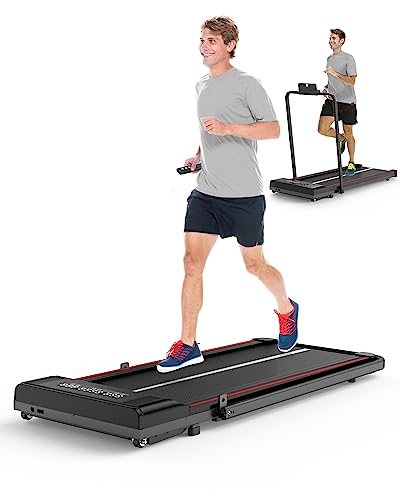tread-mill0334
tread-mill0334
How Walking Machine Rose To Become The #1 Trend In Social Media
The Walking Machine: A Comprehensive Guide to Your Fitness Companion
In today’s fast-paced world, where time is a high-end, preserving a consistent exercise routine can be a difficulty. For lots of, a walking machine– frequently called a treadmill– acts as a perfect physical fitness companion. This short article provides a thorough take a look at walking machines, including their benefits, types, upkeep pointers, and frequently asked concerns.
Why Choose a Walking Machine?
Walking machines offer a practical and efficient way to include cardiovascular workout into every day life. Here are several crucial advantages:

- Convenience: Walking machines enable people to work out anytime, despite climate condition or time restrictions. They are perfect for busy schedules.
- Adaptability: Users can walk, jog, or perform at their own pace and strength.
- Safety: Walking machines present a lower danger of injury compared to outdoor walking or running, specifically for novices or those recuperating from injuries.
- Tracking Progress: Many treadmills included integrated monitors that track metrics like speed, distance, and calories burned.
Kinds Of Walking Machines
When considering a walking machine, it’s important to select the best treadmill for home uk type based upon private physical fitness objectives and area constraints. Below are the main types of walking machines:
| Type | Description |
|---|---|
| Manual Treadmills | These machines do not have a motor, and users require to stroll or run to turn the belt. |
| Electric Treadmills | Powered by an electric motor, enabling users to set the speed and slope effortlessly. |
| Folding Treadmills | Developed for easy storage, these treadmills can be folded when not in use. |
| Desk Treadmills | Ideal for a double work and workout environment, these compact machines enable walking while working. |
| Slope Trainers | These permit users to mimic uphill walking, boosting workout strength and calorie burn. |
Selecting the Right Walking Machine
Picking the best walking machine can significantly affect motivation and efficiency. Here are some factors to consider:
Key Features to Look For
- Motor Power: An effective motor ensures a smooth and constant workout. For occasional walkers, a 1.5 HP motor is usually sufficient; for heavier usage, search for 3.0 HP and above.
- Belt Size: A larger and longer belt provides more space for a comfortable stride. Requirement sizes vary from 16 inches large and 50 inches long.
- Slope Options: Adjustable slope settings can replicate walking or running uphill, increasing the strength of the workout.
- Shock Absorption: Good shock absorption lowers the danger of joint injuries and enhances convenience.
- Console Features: Look for integrated exercises, heart rate screens, and connectivity functions like Bluetooth for a more appealing experience.
Budget plan Considerations
Walking machines come in a vast array of prices, depending on features and construction quality. Here’s a rough budget breakdown:
| Price Range | Features |
|---|---|
| Under ₤ 300 | Basic handbook or small electric treadmills with limited functions. |
| ₤ 300 – ₤ 700 | More sophisticated electric treadmills with slope, medium power motors, and better warranties. |
| ₤ 700 – ₤ 1500 | High-quality electric treadmills with larger built-in displays, comprehensive functions, and warranties. |
| ₤ 1500 and above | High-end designs providing innovative innovation, functions, and durable construction for major physical fitness enthusiasts. |
Maintenance Tips for Your Walking Machine
To guarantee durability and optimal performance of a walking machine, consider the following upkeep tips:
- Regular Cleaning: Dust and sweat can accumulate on the machine and the belt. Clean down the surface areas and tidy the belt regularly.
- Lubrication: Depending on the model, lubricating the running belt regularly can avoid wear and tear. Examine the manufacturer guidelines for advised lubrication schedules.
- Examination: Periodically inspect the machine for loose screws or used parts. Tighten up and replace as needed.
- Calibration: Occasionally, check the calibration of your machine’s metrics to guarantee they provide accurate data.
- Correct Use: Follow the manufacturer’s recommendations for weight limitations and operational standards.
FAQs About Walking Machines
1. Are walking machines an excellent exercise?
Yes, walking machines provide an excellent cardiovascular workout, can aid with weight loss, and enhance overall health.
2. How frequently should I use a walking machine?
Go for a minimum of 150 minutes of moderate-intensity aerobic activity each week, which can quickly be attained with routine sessions on a walking machine.
3. Can I reduce weight on a walking machine?
Yes, integrating a walking machine routine into a healthy diet can promote weight-loss, specifically if integrated with periods and incline training.
4. Is it safe for elders to use a walking machine?
Yes, walking machines can be safe for elders with low-impact settings and security functions like hand rails. However, individuals need to speak with their doctor before beginning any workout program.
5. What’s the distinction between a treadmill and a walking machine?
The term “walking machine” typically refers to a treadmill meant for walking, while “treadmill” can refer to machines used for numerous strengths, consisting of running.
With their flexibility and convenience, walking machines can considerably enhance one’s fitness journey. By thoroughly selecting the ideal type, ensuring proper maintenance, and incorporating different workout strategies, users can maximize their walking machine’s advantages. Just like any workout routine, consistency is crucial to accomplishing long lasting physical fitness outcomes.



